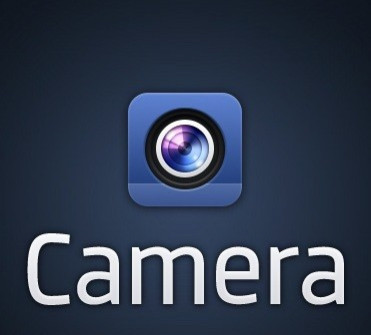Facebook Camera Review: Like Instagram, But More Relevant
Review

Six days after the company's IPO and two months after it acquired photo-sharing app company Instagram for $1 billion, Facebook debuted a photo app of its own on Thursday, called Facebook Camera. The app is now available as a free download in the App Store, and it's only available for iPhone and iPod Touch owners. One would presume that iPad and Android device owners are next.
Facebook Camera is set up very similarly to Instagram and includes most of the same features, but Dirk Stoop, Facebook's product manager for photos, told The New York Times that the Menlo Park, Calif.-based company was working on this application long before the Instagram acquisition.
We can basically show you more photos on the app, so we can make a more immersive experience around your photos, Stoop said. On the side of publishing these photos, Facebook Camera lets you upload much higher resolution photos at up to 2,048 by 2,048 pixels wide.
Here, we'll break down Facebook Camera, and evaluate whether or not the new app has added value over Instagram, despite the similarities between the two free apps.
The Pros
It'd be very easy for Facebook to create a layout identical to Instagram's, with a feed of photos on the home page and a series of buttons across the bottom, but Facebook went the other direction: The very top of Facebook Camera shows previews of photos from your Camera Roll on your iPhone or iPod Touch, and underneath that is a clean and simple black and white interface, which looks exactly like Facebooks' News Feed but without all of the links, status updates and videos. It was clearly well thought-out, and it's fun and easy to scroll through your Photo Feed.
Facebook also kept it simple with the options: You can either look at photos uploaded by your friends, or view the photos on your own wall. Photos themselves look big, but comments and likes don't get in the way; instead, both elements are overlaid onto the bottom of the photo. It's not slick necessarily, but it is extremely clean and easy to navigate.
To add photos, all you need to do is swipe from the top down to see a full screen of your Camera Roll. Unlike Instagram, you can select multiple photos to upload at any given time by activating the transparent checkmark at the top right of each photo, which is a big relief for mobile users wanting to upload a bunch of phone pics. After you've selected your photos (you can see how many you've selected at the bottom right of the screen, in case you lose count), you can write a post about your photo, adding tags like friend and location information, before publishing directly to Facebook. It's very simple and straightforward.
The Cons
Facebook copied Instagram's system for cropping, stylizing and publishing photos; fine. There's nothing really wrong with Instagram's system anyway -- if it ain't broke, why fix it? -- but Facebook's lack of creativity in this app is extremely disappointing.
Compared to the 18 available photo filters in Instagram, Facebook only has 15 filters, and most of them are nearly identical to their Instagram counterparts, save for the more-obvious names like cool, light, and B+W.
This is where Facebook could have really shined: Filters are by far the most recognizable part of Instagram, but why did they stop at what Instagram's already done? Zuck's team could have really spread their wings on this one, creating more stylized filters like soft glows, difference clouds, inverted colors, and highlighting just one or two colors. If Facebook had added more creative filters along these lines, it would've blown Instagram out of the water -- if that's what Facebook wants.
Besides the filters, you can only crop photos and do very basic photo editing to them. It's not bad for a free application, but again, one would've hoped that Facebook could have taken Instagram's idea further.
Conclusion
While Facebook Camera is the solution for casual Instagram users, it doesn't completely replace Kevin Systrom's photo-sharing app, at least not yet. However, Facebook's new app is well on its way: The interface is much more fluid and easy to navigate than Instagram -- not that either are confusing, necessarily -- but Facebook copies Instagram without one-upping it.
The reason to leave Instagram for Facebook Camera is simply if you use Facebook more than Instagram, or if you were only had Instagram for the photo filters. Facebook Camera's filters are essentially the same as Instagram's -- unfortunately -- and the layout is much more user-friendly. Best of all, users can finally add and stylize multiple photos at a time, which makes uploading and publishing a simpler and less time-consuming process.
While Facebook Camera is certainly worth the price -- free -- there are many ways it could improve: It's not particularly attractive, it would be nice to add filters to photos you've already uploaded to your profile -- or at least create duplicate versions with those changes -- and Facebook's lack of creativity with the filters leaves much to be desired. Yet, it's a solid start for Facebook, which can only hope that this new photo app will give its share price a slight boost.
© Copyright IBTimes 2025. All rights reserved.






















